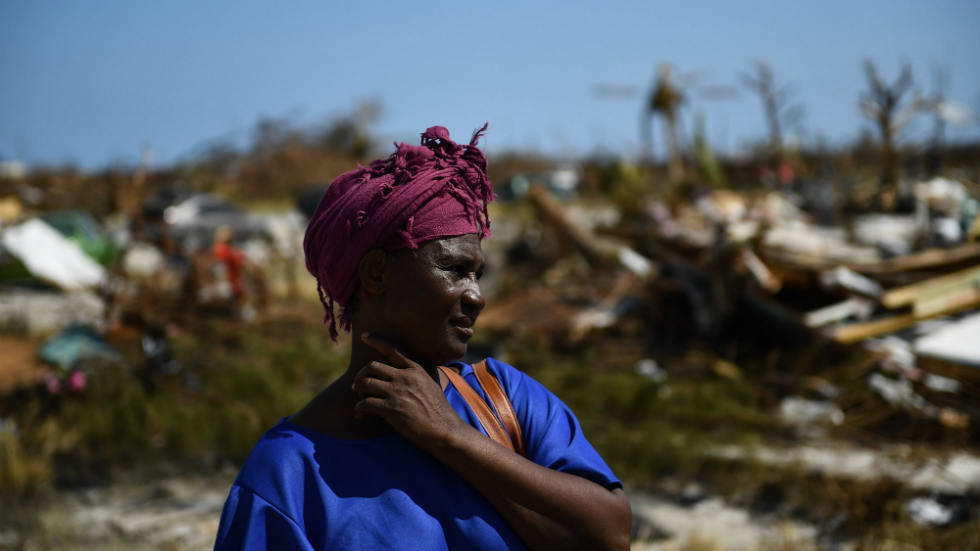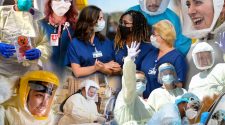The unfolding tragedy in the Bahamas demonstrates that the 21st century will be marked by increasingly frequent, often catastrophic disasters of unprecedented scope and scale. Yet again, the unprecedented challenges of disaster management are being met with mostly conventional, labor-intensive, costly, and often inadequately slow response efforts. These 21st-century threats, particularly those that affect livelihood, health, and well-being, deserve the application of 21st-century technologies.
Innovations in biotechnology and the life sciences, including remote based medical care via high-fidelity telehealth platforms and the implementation of other digital health solutions, remain mostly on the sidelines in acute event response. New networks are needed to connect the worlds of startup companies, venture capital investors and government agencies to make the most of these innovations.
Government must be a part of these networks because the technologies needed to manage large-scale catastrophes and outbreak epidemics — vaccines, medicines, diagnostic tools, data systems — are unlikely to be commercial moneymakers, despite being essential to U.S. national security. Without a strategy to harness these emerging capabilities, the country risks being unprepared when faced with the potentially catastrophic effects of a large-scale disaster, whether it be due to a cataclysmic hurricane, devastating earthquake, natural epidemic or a deliberate bio-attack.
The U.S. federal government was once the largest investor in scientific research and development (R&D), and the focus of this R&D in the physical sciences was chiefly for military and defense purposes. But in the 1990s, innovation from the private industry began to outstrip the pace of U.S. government’s R&D. In-Q-Tel, Inc., the independent, non-profit strategic investor was founded 20 years ago to accelerate the introduction of cutting-edge, problem-solving technologies from the venture capital backed startup companies, which are the source of much innovation today, to government users. The company’s unique purview allows us to see the many emerging, useful technologies that can be applied rapidly to hasten and augment disaster relief efforts and outcomes.
Under the current conditions in the Bahamas, a top priority should be the real-time deployment of a robust information management and communications platform to support vital health security efforts. Technologies that permit the self-sorting of potentially ill, injured or infected populations via the use of wearables, sensors and other biometric devices would be critical to direct the right resources to the disaster victims who need them most.
Applications of artificial intelligence and computer vision technologies to aid clinical triage and diagnostics could help ensure that scarce resources are preserved and given to those most in need. Robust telehealth and telemedicine connectivity could be used to provide healthcare consultations to an isolated or mobile population needing urgent assistance. Technologies that support efficiencies in vital supply chains, and the potential to synthetically create alternatives to scarce resources, also would be critical and valuable.
Data systems that are integrated, accessible and secure, would be the backbone upon which any outbreak event response is conducted. The capability to address key questions of disaster management will be contingent upon effective data collection, curation and rapid analytics — including tracking the geographic concentration of illness and injuries, identifying those who are the most vulnerable and susceptible to disease, and determining the proper placement of incoming resources, equipment and personnel.
Imagine that you are a Hurricane Dorian survivor, waiting for assistance and responders. Because you’re wearing a sensor connected to a large public health database via smartphone and linked to a rapidly deployed telecommunications backbone, you’re quickly identified as injured and in need of help ASAP.
You receive instructions — via smartphone — to take protective measures, while at the same time, autonomous delivery of protective antibiotics and a vaccine against tetanus impregnated on a microneedle patch is sent to your location, for your immediate self-administration.
You’re directed to arriving medical response teams where you receive state-of-the-art medical care, supported by a network of national experts who consult in real-time on your care, utilizing hospital-based telehealth solutions.
A robust information management platform, able to integrate disparate data sources from electronic health records, public health inputs on the characteristics of injuries and illnesses encountered. Meanwhile, crowdsourced information will help emergency response, public health and government officials make sense of the disaster, what has occurred, and what yet may occur, based on predictive analytics, modeling, and deep learning.
The tools and technologies exist to improve the response time, medical care delivery and outcomes for those affected by disasters whether natural or man-made. It’s time to establish a 21st-century response capability that reflects capabilities and innovations that are currently within reach.
Dan Hanfling, M.D., is a practicing emergency physician at Inova Fairfax Hospital with a 20-year record of response to large scale disasters as part of the FEMA and USAID urban search and rescue system, and vice president of technical staff at In-Q-Tel.
Tara O’Toole, M.D., is a senior fellow and executive vice president at In-Q-Tel. In-Q-Tel is a private, non-profit strategic investment firm that links the U.S. Intelligence Community and venture-backed start-up firms on the leading edge of technological innovation.















